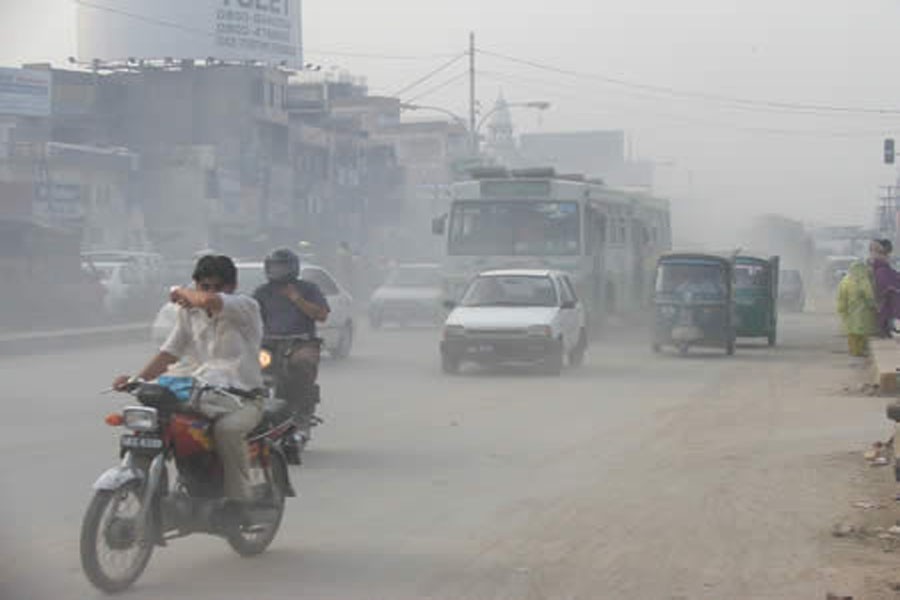The Dhaka-dwellers who are physically or mentally allergic to dust ought to prepare themselves for worse times. Winter is not far away. Dozens of vital roads are being dug up for construction or repair jobs. At many spots work is in full swing, especially one that is related to Metro Rail, with others left half done or in a mess. These works have one thing in common. They create the menace of dust.
The scorching hot-and-humid days are receding. It means that the mild winter Dhaka has become used to these days is not far away. In accordance with the Bangla calendar, the country is in the elusive phase of pre-winter autumn - Hemonto. In the earlier days, the air around this time would clearly smell of winter, even in a large city like Dhaka. Fog and morning dew-drops would return as part of their annual visits to villages. No longer. Likewise, Hemonto has long disappeared from the capital. Only a few city residents are sharp enough to feel its fleeting presence. However, some features distinguish the Dhaka winter. The dreadful menace of dust is one of them.
As Hemonto begins to set in, with rain and showers giving in to sunny days, the Dhaka residents are made to brace for the dusty times. These are the worst of times for the permanent Dhaka dwellers. With the advent of the largely dry season of winter, the ferocity of dust menace keeps only intensifying. The alarming extent to which it can jeopardise Dhaka life is felt acutely by its residents. Day-to-day activities nearly go haywire during monsoon, when water-logging, a perennial ordeal, cripples the city. Yet this water-related scourge provides spaces for respite to people while indoors in the relatively higher neighbourhoods. It affects mainly the commuters using certain low-lying roads. Compared to it, the onslaught of dust is terribly merciless. It spares none, barring those living on higher floors in multi-storeyed apartments or travelling in air-conditioned cars. Except these few Dhaka residents, the whole city population is made to bear with the curse of dust. What's worse, the menace lingers even after the official end of winter in January-February. After winter, dust-storms of March overtake Dhaka.
Unlike many large cities in South Asia, the season of dust appears in Dhaka every year with increased vengeance. Urban experts blame a few features for it. According to them, despite being a 400-year-old city, Dhaka has yet to come out of its small-town ambience. By the year of 2018, large parts of the city should have been under layers of concrete. In fact few big cities in the present world expose their surface of soil or dust. The concrete cover in the cities' greater parts keeps the dust from coming out and mixing with the air, like in New York or London. The same applies to the case of mud, which adds to the many nuisances plaguing the underdeveloped cities. Large tracts in central Kolkata in West Bengal, India, are dust-free. The areas were covered with concrete layers long time back. Moreover, Kolkata, and for that matter Delhi, can take pride in their green pockets filled with trees. On all these counts, Dhaka offers a dreary look with its people falling victim to dust and air pollution in rising numbers as time wears on.
Due to Dhaka being a dust-filled city, with its trees vanishing fast, its residents are getting exposed to scores of health hazards. Those include lung diseases and respiratory problems like asthma, with the elderly and children being easy victims. To the emerging cities, dust comes up as an impediment to their metropolitan dreams. Dhaka can ill-afford to underrate the problem.


